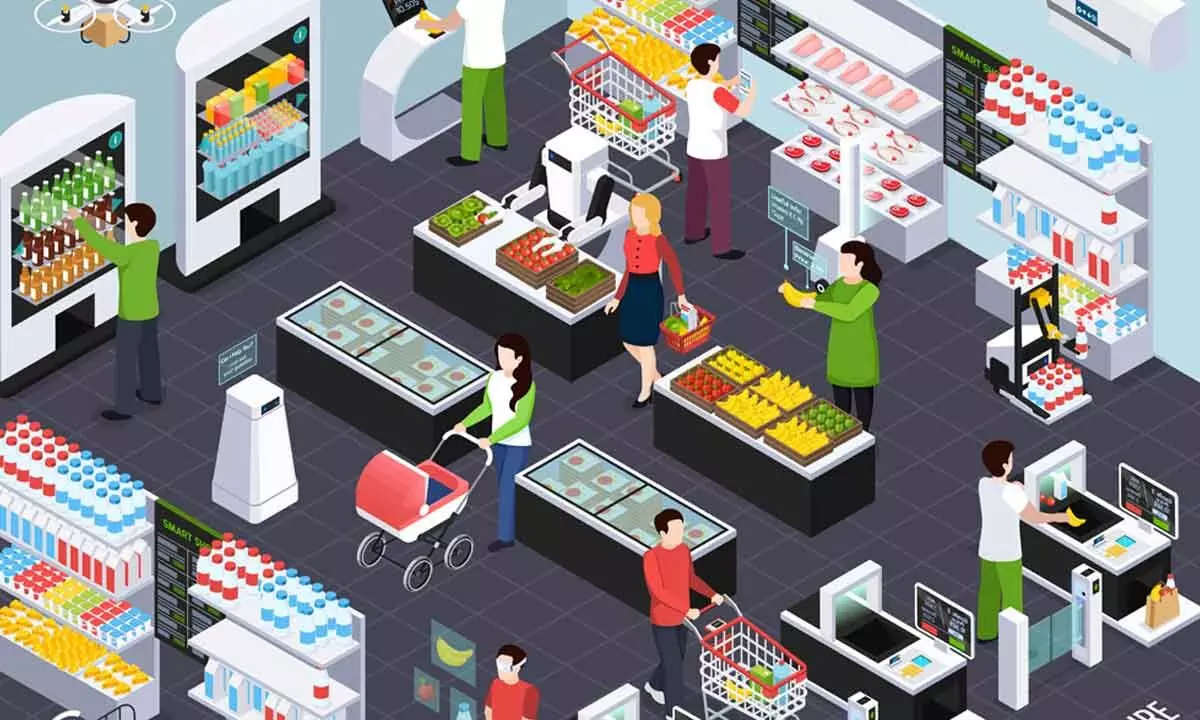How IoT is changing the retail industry
IoT devices are transforming the retail industry by enabling retailers to optimise their operations, improve the customer experience, and reduce costs
image for illustrative purpose

The retail industryis going through a significant transformation as IoT (Internet of Things) devices are revolutionising the way retailers manage inventory, engage with customers, and streamline operations. The use of IoT in the retail industry is gaining momentum, and it's no surprise as it offers many benefits to both retailers and customers.
One of the significant advantages of IoT in retail is the improvement in the inventory management system. IoT-enabled devices like RFID (Radio Frequency Identification) tags and sensors can help retailers monitor inventory levels in real-time. It provides real-time visibility into stock levels, enabling retailers to optimise their supply chain, reduce waste, and prevent stockouts. Retailers can also use IoT to automate the stock replenishment process, reducing the need for staff and streamlining operations.
In addition to inventory management, IoT can also help retailers enhance the customer experience. Smart shelves, for instance, are an excellent example of how IoT can transform the shopping experience. Smart shelves are equipped with sensors that detect when products are running low or out of stock, sending an alert to the retailer. This enables retailers to restock products quickly, preventing lost sales and improving the customer experience.
Gathering data through a system of connected devices is the essential application of IoT. It is transforming the shopping experience through customer analytics. Retailers can use IoT devices like beacons to gather data on customer behaviour, such as which products they interact with, which aisles they spend the most time in, and how long they stay in the store. This data can be used to personalise marketing messages and improve the overall customer experience.
Ever waited in a long checkout line at a supermart? Well, IoT devices are also being used to improve the checkout process. Automated checkout machines can reduce the need for staff and make the checkout process more efficient by reducing wait times and thereby improving the customer experience. It also reduces the chances of human error, which can be a significant issue during peak hours.
Talking to Bizz Buzz, Pranesh Chaudhary, Founder & CEO of Zunpulse, says, “Small and medium-sized retailers can also benefit from this technology, as it can help them compete with larger retailers. IoT can provide small and medium-sized retailers with the same level of visibility and control over their operations as larger retailers. It can help them optimise their supply chain, reduce costs, improve the customer experience, and position themselves against leading players in the market.”
IoT devices are transforming the retail industry by enabling retailers to optimise their operations, improve the customer experience, and reduce costs. It’s clear that the technology has enormous potential to drive growth and innovation in the retail industry, he said.
The adoption of IoT in Indian retail is still in its early stages, but there are clear signs of growth and potential for the technology in the industry. The use of devices like smart shelves, beacons, and self-checkout machines is gaining traction and enabling retailers to improve the customer experience and streamline operations.
As the use of IoT in retail continues to grow, we can expect to see more efficient and personalised shopping experiences for customers and streamlined operations for retailers.

